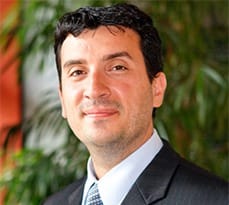‘Science is not enough’ for ensuring commercial success of new drugs, so a new journal article co-authored by Dr Nektarios (Aris) Oraiopoulos of Cambridge Judge outlines a framework to help pharma companies align better with end-customer priorities.

In most industries, the person using a product or service is also the person who orders and pays for it – be it a new jacket or a restaurant meal. But the pharmaceutical industry is very different, in that the end-user of a new drug – the patient – is rarely the person who pays for or prescribes its use. Rather, it’s usually a doctor who makes the decisions and an insurance company or government which foots the bill.
Traditionally, it was enough for a new drug to demonstrate that it was safe and effective to receive regulatory approval and reach the market. This is no longer enough: cash-constrained health systems are scrutinising the relative advantages of each drug with respect to existing treatments before deciding on their reimbursements policies, and therefore on whether a drug would be commercially viable.

This is a major factor behind one of the pharmaceutical industry’s biggest debacles, the 2007 withdrawal of much-touted insulin brand Exubera from the market by drugs giant Pfizer, says Dr Nektarios (Aris) Oraiopoulos, University Lecturer in Operations and Technology Management at Cambridge Judge Business School. Expected to be a $2 billion-a-year product, Exubera reached sales of just $12 million before it was withdrawn. Since then, there have been numerous examples of drugs that failed to reach the market, despite meeting the technical requirements.
“The reason that Exubera is notorious is because it was withdrawn solely due to disappointing sales rather than efficacy or safety concerns,” says Aris. “If we dig a little deeper, we find that the reason for the disappointing sales was that Exubera did not meet the value-for-money expectations of the payers. There are important lessons to be drawn from this episode.”
Aris and a co-author, William Dunlop of Mundipharma International, have outlined a new “customer-focused” framework in a new article in the journal Advances in Therapy, in order to closer align drug development with expectations of the end-customer, including the payer.
The central idea of the article is that being a more customer-focused organisation requires being more responsive to new evidence about the effect of a drug to patients.
“This is an industry where traditional forecasting methods have very little value. That is why it is paramount for an organisation to be able to generate the best available information, and equally important, to be able to act upon it,” says Aris. For this to happen, the key is cross-functional collaboration between the various departments of the pharma company.
The article – entitled “When science is not enough: a framework towards more customer-focused drug development” – identifies the three key barriers to such an integrated development process, and builds upon the latest management research to develop a framework to overcome them.
First, the highly complex and specialised nature of the drug development process encourages a fragmented process where each department focuses on a specific challenge. Second, the long development cycles for new drugs (typically six to seven years after the discovery of a new compound) means that managers are often rewarded for interim goals rather than eventual market launch. And thirdly, the high costs of pharma development including clinical trials means that different project managers have to compete for scarce resources, and are prone to issue “highly optimistic” and difficult-to-challenge forecasts about their own project.
“Taken together,” these three characteristics of the pharmaceutical industry “can create an environment in which there is misalignment in incentives between specific groups and the overall organisation,” the paper says. “When that happens, collaboration suffers and these groups focus on the short-term viability (or competence) of their narrowly defined ‘silo’, rather than contributing to the end goal: developing customer-focused medicines.”
The research paper therefore suggests a customer-focused framework based on three key principles based on economic, behavioural and organisational issues:
- Economic
A selection process that aims to “filter out” products not meeting customer requirements, rather than encouraging progression at any cost; transparency in resource allocation that includes consistency in the “assumptions and assessment criteria” used by different business units in their R&D projects; and incentive schemes that strike a balance between unit-specific and company-wide performance. - Behavioural
Even the most experienced executives and project managers are susceptible to biases that might affect their decision-making processes. Seeking external feedback from advisory boards, relying on data-driven methods that pose challenging questions about the end payer’s requirements earlier in the development process, can significantly mitigate such biases. - Organisational
Managers should simultaneously excel in their own areas while supporting collaboration across different parts of the business, and develop bridges between traditionally distant business units in order to foster greater collaboration. This cannot happen without strong commitment and active involvement from senior management.
“Some elements of the framework proposed in our article could apply to many industries, but it is specifically focused on the unique nature of the pharmaceutical sector,” says Aris.
“Value-based pricing and reimbursement policies are causing major shift in the industry. Many pharma companies are investing in new information technologies, from machine learning to internet of things (IoT) devices, that will enable them to integrate real-time patient data into their development efforts. This is great, but such technology can only go so far when misaligned incentives prevent the lack of collaboration and information sharing. Addressing these challenges should be put at the forefront of the effort for a customer-centric drug development.”

